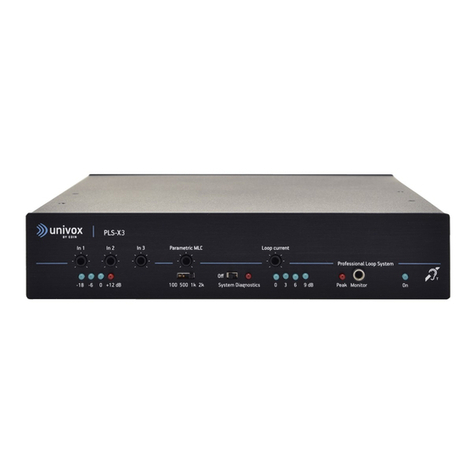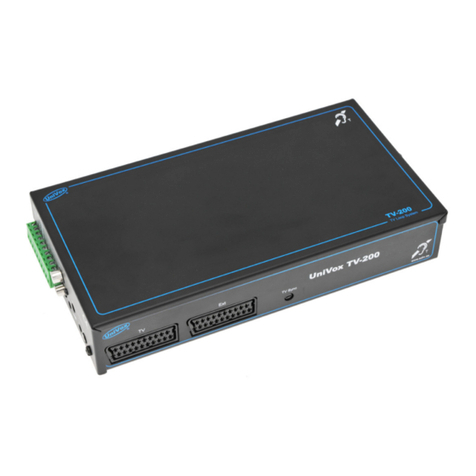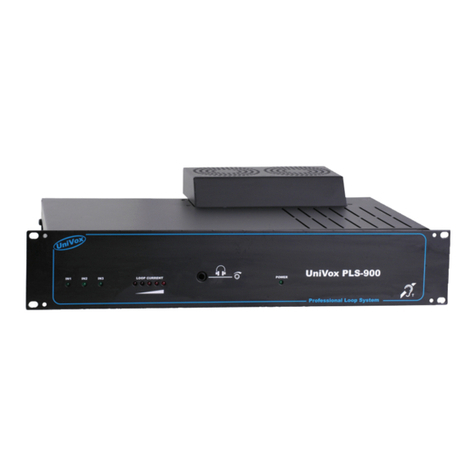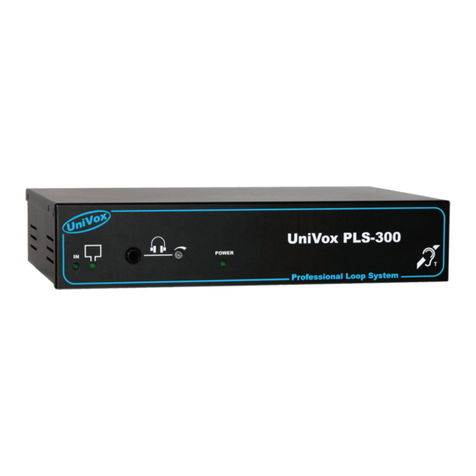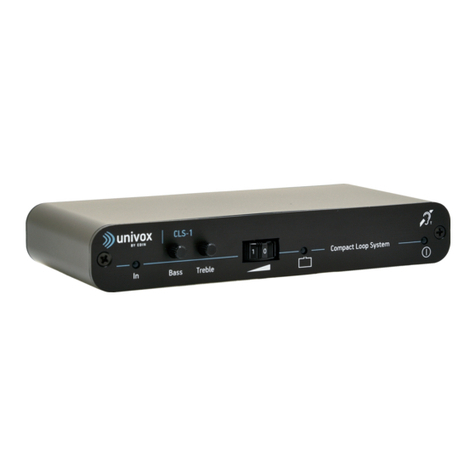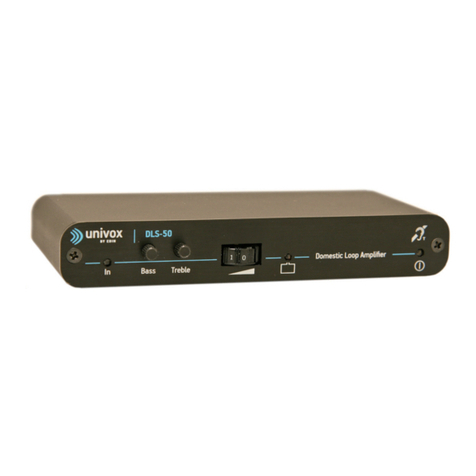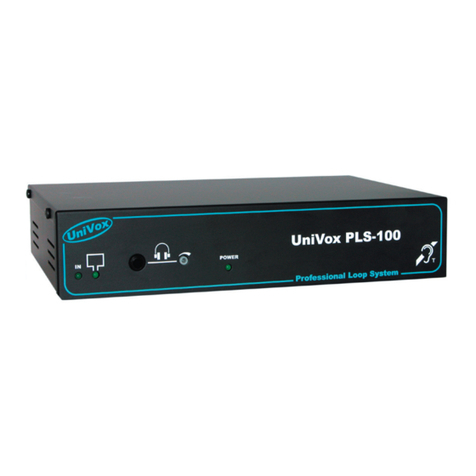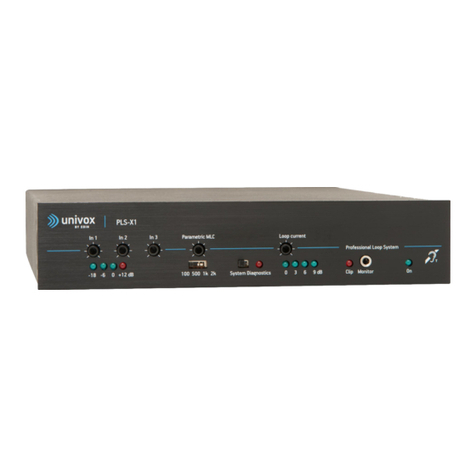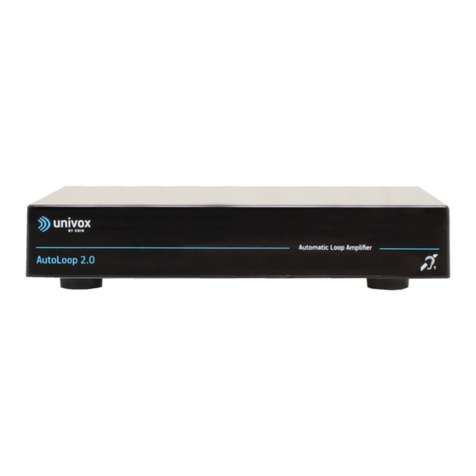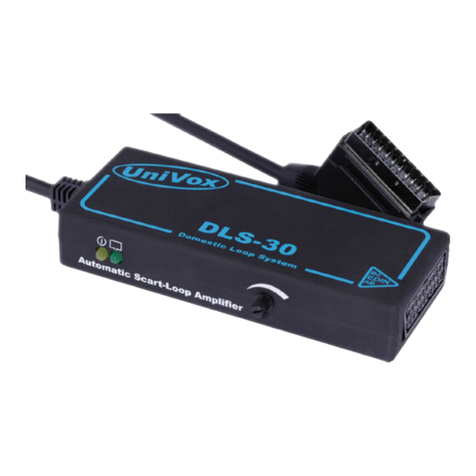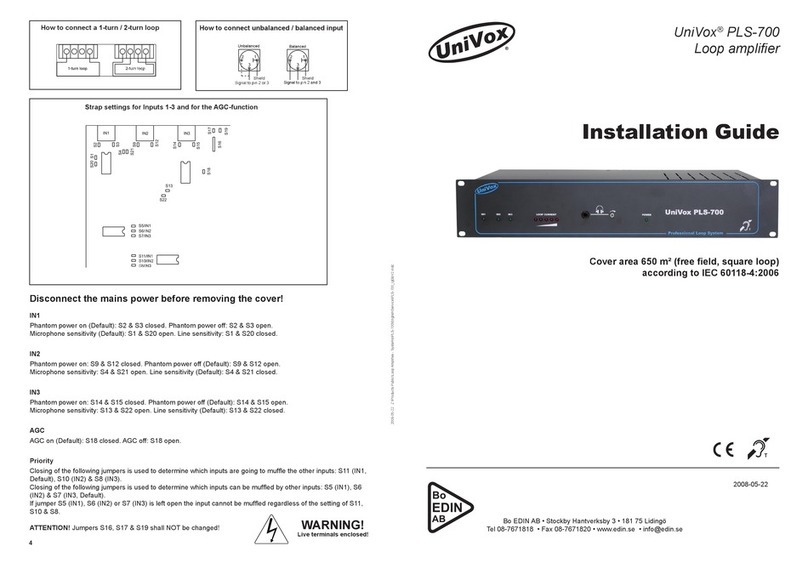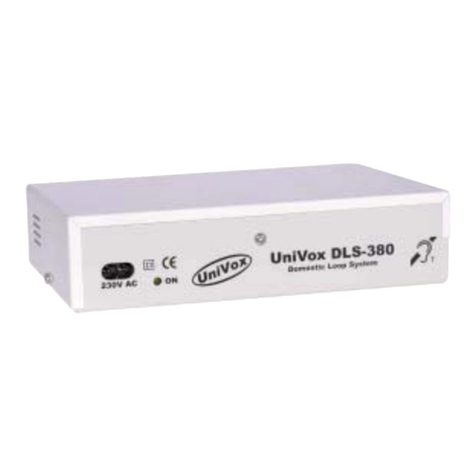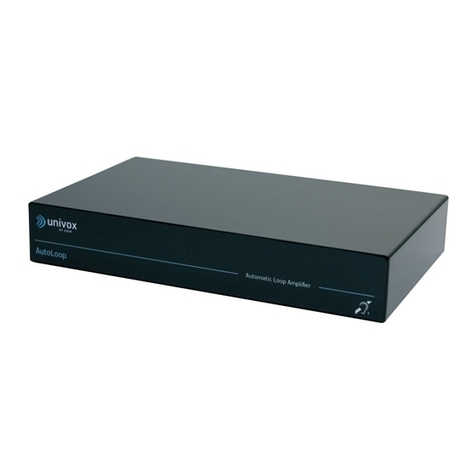Purchase the right cable/s if you haven’t done that in connection with the
purchase of your DLS-50. A list of cables and other accessories/spare
parts can be found on page 6.
Connect your TV and/or other sound sources to the DLS-50 with the chosen
cable according to the following guidelines:
TV/other sound sources: Connect TV, stereo etc. to the line input (Line). If
you want to connect both TV and for example stereo, use the line input
(Line) for one of the sound sources and the combined mic/line input (Mic/
Line) for the other sound source.
If you watch TV by cable/satellite and also have a VHS or DVD player, we
recommend to connect an automatic Scart control (AutoScart, read more on
page 4). For connection to the TV’s Scart output we will supply a 3.5mm
stereojack with a 2 phono lead. We also supply a phono to scart adaptor
Microphone: If a microphone should be used, for example to make it
possible for someone else to talk to you while using the loop, it should
be connected to the special microphone input (Mic). The microphone
shall be an electret type microphone (13B or 13C, see Accessories and
spare parts on page 6).
It’s also possible to pick up TV or stereo sound by attaching a special micro-
phone on the speaker grid (13A, see Accessories and spare parts on page
6). This microphone is normally connected to the combined mic/line input
(Mic/Line) but can also be connected to the special mic input (Mic) if you
want to adjust the input level. Take off the paper cover of the loose round
velcro pad and attach it to the speaker grid of the TV. Then use the attached
velcro pad on the microphone to attach it onto the speaker. The microphone
will then automatically be directed inwards and pick up the sound from the
speaker. If you want to pick up the sound of a surround system with the 13A
microphone, attach it to the centre speaker.
Transformer: Connect the transformer to the output for mains power in
the rear panel (12V AC/DC). Finally connect the transformer to a power
outlet.
UniVox®DLS-50
Automatic Scart Connection
If you want to connect UniVox DLS-50 to the Scart output of your TV you
should start with buying a special scart connector, UniVox AutoScart. UniVox
AutoScart always gives you the right sound in the loop, regardless if you watch
TV through your digibox, cable or satellite or watch DVD or VHS (see Accesso-
ries and spare parts).
If you already have a UniVox AutoScart, be sure that your TV works as in-
tended with your VCR/DVD/satellite receiver/digibox. All units connected to
your TV’s Scart output must be serial connected (see example of serial con-
nection below). If there are several Scart outputs on your TV you shall always
connect UniVox Autoscart to the Scart output no. 1 on your TV.
Following a proper connection the sound and picture on your TV will automatically
change to the program source you have chosen. This means that if you start your
VCR sound and picture automatically change to the VHS movie. In the same way
the sound and picture in your TV will automatically change to the sound and pic-
ture from the unit you have started if you start the DVD player, satellite receiver or
digibox.
Serial connection TV / Satellite/VHS
Scart cable between TV and satellite receiver Scart cable between satellite receiver and
VHS
Adjusting sound level, tone and microphone sensitivity
When all connections are done the indicator for mains power on the right in the
front panel should light steadily. The system is now active and ready to use. It’s
now time to make your personal adjustments of loop current (volume), bass, treble
and microphone sensitivity to receive the best possible sound intelligibility. Start by
putting your hearing aid/s in T position.
Sound level: The sound level in the loop is adjusted with the volume control
(thumbwheel) in the front panel. The level can be adjusted up or down according
to the conditions on site and to your specific hearing loss. Adjust the thumbwheel
until you receive a comfortable level. It can be recommended to make a note of
the ideal level for future reference.
